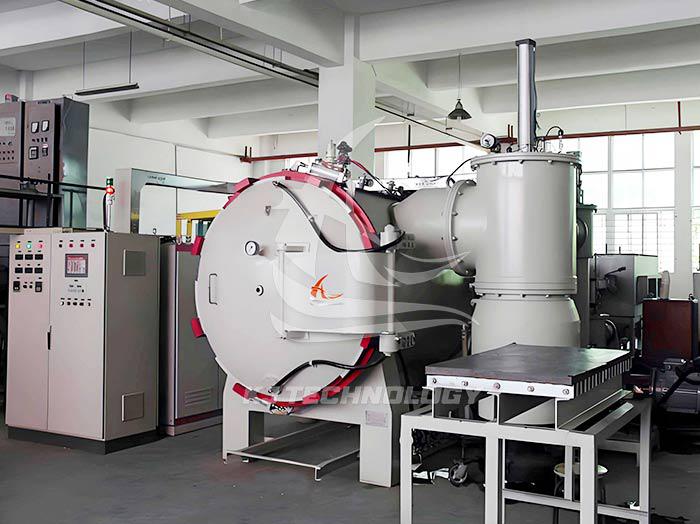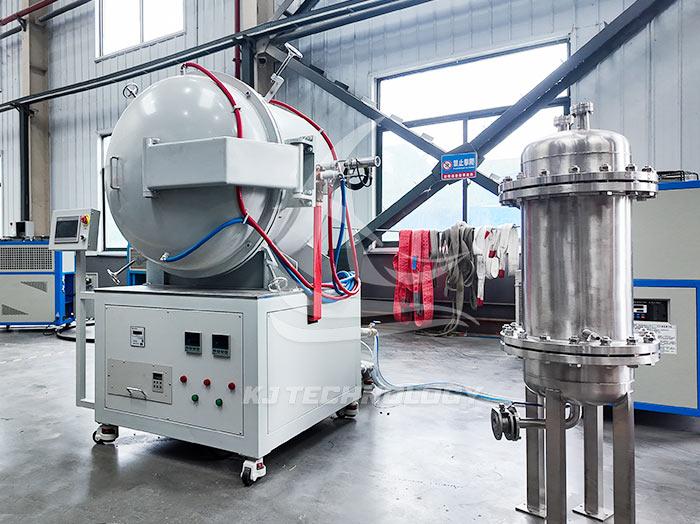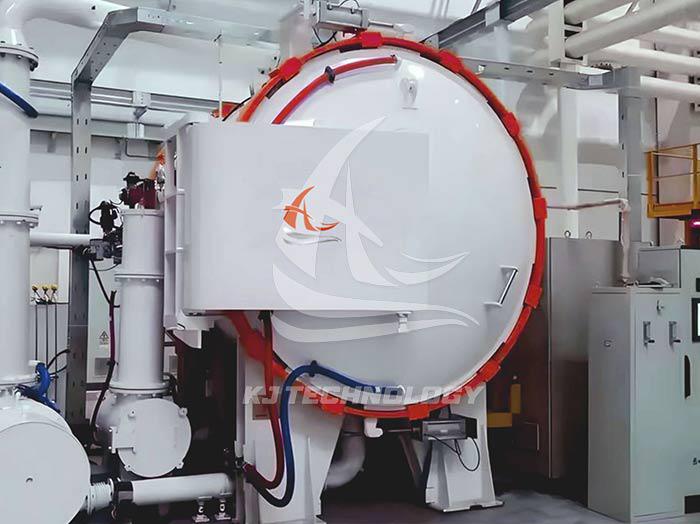High fidelity air quenching furnace for gear processing
 11-18-2025 Author: KJ technology
11-18-2025 Author: KJ technology
High fidelity air quenching furnace has shown significant advantages in gear processing, significantly improving the surface quality, mechanical properties, and dimensional accuracy of gears through non oxidizing heating, uniform cooling, and process flexibility, while reducing production costs, becoming a key technology for high-end gear manufacturing. The following is a specific analysis:
1. The core advantages of high fidelity air quenching furnace
Non oxidizing heating improves surface quality
The vacuum environment (below one atmosphere) effectively eliminates impurities such as oxygen and water vapor, avoiding oxidation or decarburization of gears during heating. After treatment, the surface of the gear is bright and clean, without the need for subsequent polishing or sandblasting, saving mechanical processing costs, while meeting the strict requirements for surface cleanliness in fields such as medical equipment and aerospace.
Uniform cooling to reduce deformation
By optimizing the airflow circulation and pressure gradient (such as using the "low-pressure start+gradual pressure rise" strategy), the high vacuum air quenching furnace can evenly cool all parts of the gear, especially for complex structures such as thin walls and sharp corners, with deformation only one-third of that of salt bath quenching. For example, after processing the synchronizer sleeve of a car transmission, the average value of tooth distortion is reduced, and the pass rate is significantly improved.
Flexible craftsmanship and adaptability to diverse materials
By adjusting the gas types (nitrogen, argon, helium), pressure, and flow rate, the quenching needs of different materials can be met:
Structural steel: such as 18CrNiMo7-6, after quenching with 2MPa nitrogen gas, the surface hardness reaches 745HV30, the core hardness is 370HV30, and the effective hardening layer depth is 0.88mm.
High speed steel: Helium cooling rate is 30-50% higher than nitrogen, which can achieve ultra high speed quenching at 100 ℃/s, improving material hardness and wear resistance.
Titanium alloy: High vacuum environment avoids loss of volatile elements and meets the requirements for material purity in the aerospace industry.
Environmental protection and energy conservation, reducing operating costs
No need to use quenching oil, eliminating oil pollution from the source, eliminating cleaning processes and oily liquid discharge. Advanced equipment equipped with gas recovery system, combined with programmable temperature control system for precise heating, reduces energy waste, and conforms to the trend of green manufacturing.
2. Typical application scenarios in gear processing
automotive industry
Transmission gears: such as the main reduction sun gear shaft of an automatic transmission, after low-pressure vacuum carburizing and high-pressure gas quenching, the thermal distortion is controlled within a very narrow range, and the dimensional accuracy is significantly improved.
Drive shaft: A company's push rod controlled atmosphere continuous carburizing production line replaces traditional oil quenching with high-pressure nitrogen quenching, reducing production costs while avoiding oil and gas pollution.
aerospace
High temperature alloy components, such as turbine discs and combustion chambers, form a dense martensitic structure through graded gas quenching (slow cooling followed by rapid cooling), which improves contact fatigue life.
Titanium alloy components: High vacuum environment prevents loss of volatile elements, combined with ultra high speed helium quenching, to meet performance requirements under extreme working conditions.
Motorcycle and New Energy Sector
Small modulus gears: Vacuum carburizing+high-pressure gas quenching technology eliminates internal oxidation, resulting in smaller errors in the uniformity of the infiltration layer depth and longer fatigue life.
New energy gears: By optimizing process parameters through AI simulation (such as carburizing temperature of 960-1050 ℃, acetylene pulse frequency of 1-10Hz), the depth of the infiltration layer is 1.2-1.8mm, the uniformity error is smaller, and the contact fatigue life is improved.
3. Process parameters and case analysis
Typical process flow
Preheating: Stress relief at 400 ℃.
Carburizing: High temperature carburizing at 925 ℃, combined with pulse acetylene gas supply, the surface carbon concentration reaches 2.5% within 20 minutes.
Diffusion: 860 ℃ diffusion treatment, with the depth fluctuation of the infiltration layer controlled within ± 0.05mm.
Quenching: stepwise cooling (6bar nitrogen slow cooling+18bar nitrogen fast cooling), pressure 10-20 bar, transfer time ≤ 25 seconds.
Tempering: Tempering at 170-190 ℃ to optimize stress distribution and reduce the risk of grinding cracks.
Example effect
20MnCr5 steel gear: After the above process treatment, the residual compressive stress increases, the fatigue limit is improved, and the gear meshing noise decreases.
17NiCrMo6-4 alloy steel gear: residual compressive stress at the tooth root, improved contact fatigue life, certified.








